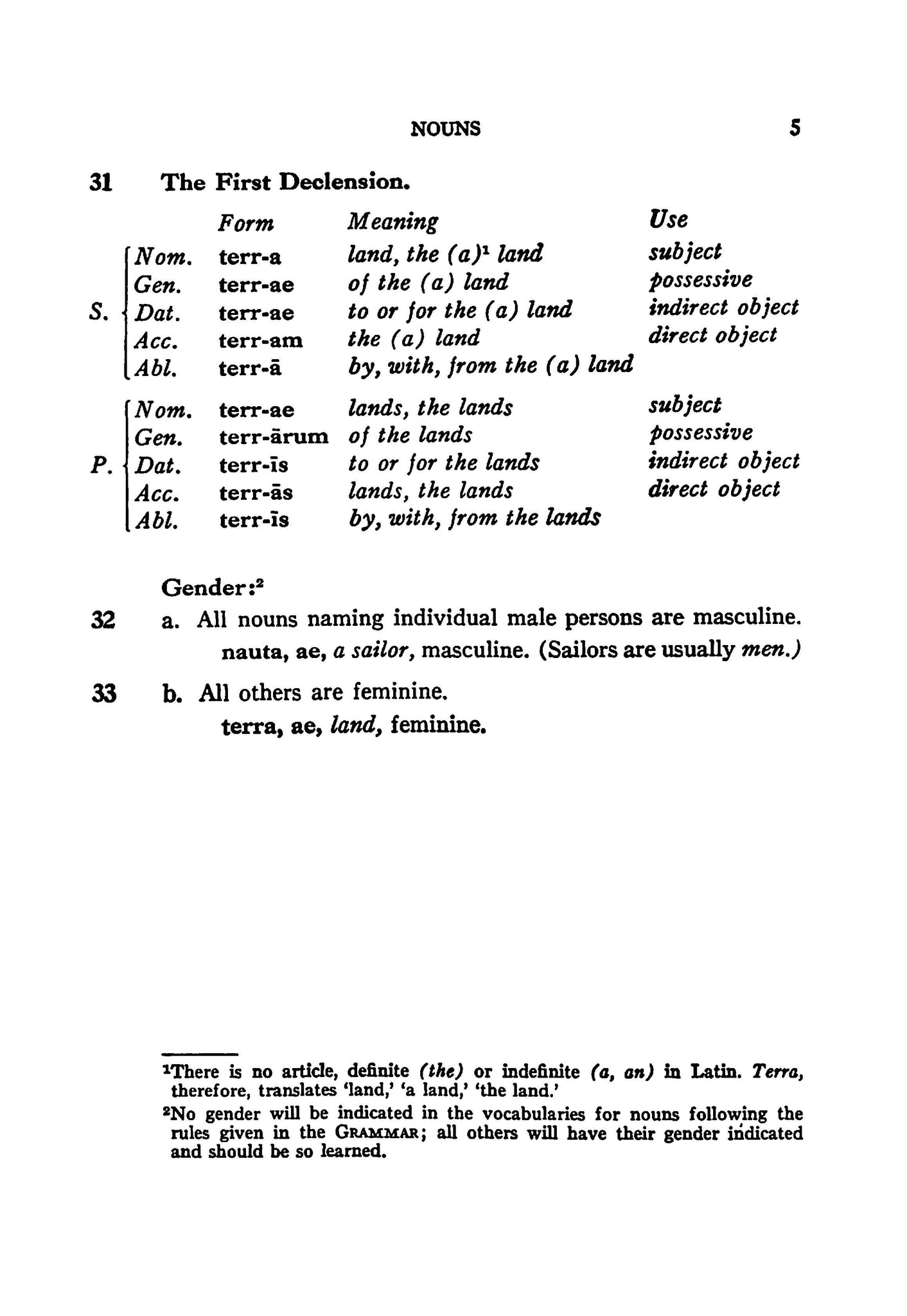

Has his boy the servant's broom? - He has it.Have you the ox of the peasant or that of the cook? - I have neither that of the peasant nor that of the cook.The word homō is sometimes added to nēmō as well as to nūllus. The indefinite nēmō is seldom used in the genitive, nūllīus being employed in its stead. The indefinite quis, and its compounds aliquis, ecquis, quisquam, and quispiam are thus inflected:. Quis may stand for aliquis, but only after particles like sī (if), nisi (unless), num (whether), and ne (lest). Quisquam (like quidquam of Lesson VI., q.v.) and nūllus, on the other hand, are only used where the sentence contains a negation either expressed or implied.

The indefinite pronouns aliquis, quis, and quispiam are always positive, and differ but little from each other, except that quispiam is more general (= "some one or another"). Somebody or anybody, some one or any one. Utrum tuum habēs calceum, an ejus (illīus)? Have you your (own) shoe, or his (that man's) Habetne famulus riscum suum (proprium), an meum? Has the servant his (own) trunk, or mine? There is here the same distinction between suus ( proprius) and ejus ( illīus) as in Obs. Instead of it, proprius is sometimes used. The absolute possessive pronoun suus is declined like the conjunctive. Habetne coquus gallīnam suam, an (illam) rūsticī? Has the cook his (own) chicken or that of the rustic? It corresponds to the English "his" when, in the reflexive sense of "his own," the subject of the sentence is meant but when another person is referred to, ejus (of him) or illīus (of that man) must be employed. The possessive pronoun suus is declined like meus and tuus. 1226477 A Practical Grammar of the Latin Language - Lesson X.-Pēnsum Decimum.


 0 kommentar(er)
0 kommentar(er)
